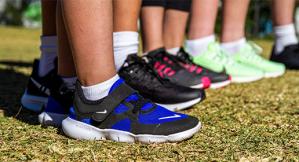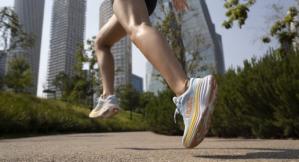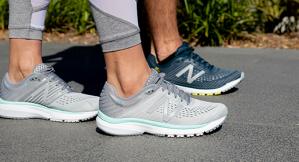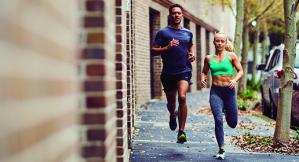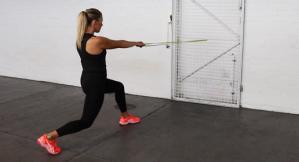MyFit
Our MyFit Blog aims to engage and inform so that we can collectively empower everyday athletes to better their best with every run.
A guide to speed training
Speed training is an essential component for athletes across various sports, from teams sports like football and basketball to What are the components of speed training?. More than just the skill of running fast, speed training involves gearing training towards conditioning, strength and technique.
We’re going to look at some of the ways athletes use speed training to increase their agility, lateral quickness and fitness.
We’re going to look at some of the ways athletes use speed training to increase their agility, lateral quickness and fitness.
What are the components of speed training?
Speed training focuses on an athlete’s ability to move quickly over short, and longer distances - focusing on the following four aspects.
Acceleration – Reaching maximum speed in the shortest amount of time.
Agility – Being able to change direction and move laterally efficiently and quickly.
Top end speed – The maximum speed at which an athlete can maintain over a set distance.
Endurance – The ability to maintain speed over longer distances.
To improve the above areas, there are some key areas that need to be focused on to get the best out of a speed training block. To improve speed, power, strength and reaction time, the following principles should be a focus of training.
Acceleration – Reaching maximum speed in the shortest amount of time.
Agility – Being able to change direction and move laterally efficiently and quickly.
Top end speed – The maximum speed at which an athlete can maintain over a set distance.
Endurance – The ability to maintain speed over longer distances.
To improve the above areas, there are some key areas that need to be focused on to get the best out of a speed training block. To improve speed, power, strength and reaction time, the following principles should be a focus of training.
Focus on the following principles
It’s not just about throwing on your favourite pair of running shoes and doing sprints until you drop, it’s a little bit more technical than that. To get the best out of your speed training the following areas should be a focus.
Technique – Proper running mechanics will maximise the efficiency of your stride. By focusing on body posture, arm movement, and foot placement, you’ll be getting more out of each stride, with less effort.
Strength and Power - Strong muscles in the legs and core are vital for repeated explosive movements. By building up the strength in your muscles over time, you will reduce the risk of injury and have a better overall performance.
Consistency – Keeping a regular training schedule is key to improving speed over time. You should be incorporating around 2-3 speed-focused workouts into your weekly training schedule.
Recovery - Rest is as just as important as the workout itself. A lack of recovery can lead to mental burnout, physical fatigue and a range of injuries. Make sure to have some down-time between sessions that allow for recovery of both the mind and body.
Technique – Proper running mechanics will maximise the efficiency of your stride. By focusing on body posture, arm movement, and foot placement, you’ll be getting more out of each stride, with less effort.
Strength and Power - Strong muscles in the legs and core are vital for repeated explosive movements. By building up the strength in your muscles over time, you will reduce the risk of injury and have a better overall performance.
Consistency – Keeping a regular training schedule is key to improving speed over time. You should be incorporating around 2-3 speed-focused workouts into your weekly training schedule.
Recovery - Rest is as just as important as the workout itself. A lack of recovery can lead to mental burnout, physical fatigue and a range of injuries. Make sure to have some down-time between sessions that allow for recovery of both the mind and body.
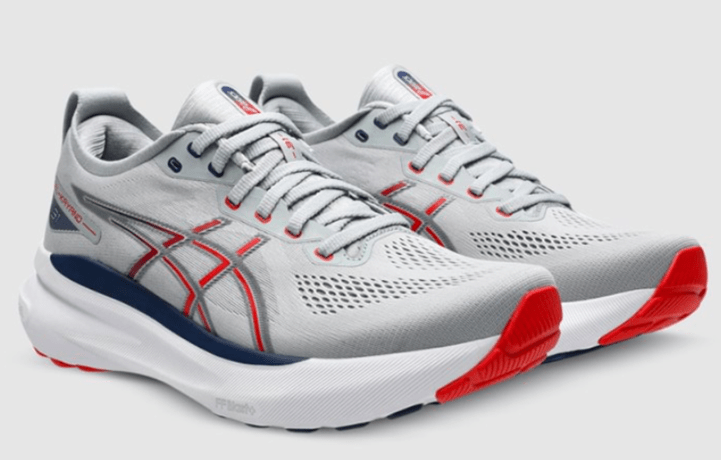

What does a speed training workout look like?
Warm-Up and Mobility
Start each speed training session with some dynamic stretches (also known as active stretching) and mobility drills to get your muscles ready. Dynamic stretching not only stretches and warms the muscles, they also loosen joints and increase the heart rate.
Some examples of dynamic stretches include high knees, butt kicks, leg swings and arm circles. These can also be done and the end of the speed training session as a warm down phase before static stretching.
Acceleration Drills
Work on short sprints to build explosive power:
Plyometric exercises will develop explosive power and coordination. These include things like box jumps, broad jumps, depth jumps and lateral bounds. Make sure to warm up adequately prior to these exercise as they have a higher risk of muscle tears due to their repeated explosive movements.
Sprint Work
Include both short and longer sprints in the speed training session. It is okay to include both in a single session, allow enough time to recover between sprints, however, ensure not to allow too much cool down time so as to risk injury.
If you have them available, use tools like agility ladders, cones, or mini hurdles. If you do not have any of these available, any kind of markers will do. Use a t-shirt, water bottle or towel to mark out areas of the ground.
Finish each speed training session with a combination of dynamic and static stretching. Use a foam roller to enhance recovery if you have one available, they are a great way to stretch muscles and remove and knots in the tissue.
Start each speed training session with some dynamic stretches (also known as active stretching) and mobility drills to get your muscles ready. Dynamic stretching not only stretches and warms the muscles, they also loosen joints and increase the heart rate.
Some examples of dynamic stretches include high knees, butt kicks, leg swings and arm circles. These can also be done and the end of the speed training session as a warm down phase before static stretching.
Acceleration Drills
Work on short sprints to build explosive power:
- Hill Sprints - Run up a steep incline for 10–20 meters to strengthen leg muscles. Do these in repeated efforts of around 10-15 reps, with a short break between each rep to allow for maximal effort.
- Sled Pushes - Push a weighted sled to improve acceleration and resistance. As with the hill sprints, have a short break of around 20-30 seconds after each rep to ensure technique and effort are at a maximum level.
Plyometric exercises will develop explosive power and coordination. These include things like box jumps, broad jumps, depth jumps and lateral bounds. Make sure to warm up adequately prior to these exercise as they have a higher risk of muscle tears due to their repeated explosive movements.
Sprint Work
Include both short and longer sprints in the speed training session. It is okay to include both in a single session, allow enough time to recover between sprints, however, ensure not to allow too much cool down time so as to risk injury.
- Short Sprints (20–50 meters) - Do anywhere from 5 to 20 reps and focus on maximum effort and technique.
- Flying Sprints - Gradually accelerate over 20 meters, then sprint at full speed for another 20 meters with the same number of reps and the short sprints.
If you have them available, use tools like agility ladders, cones, or mini hurdles. If you do not have any of these available, any kind of markers will do. Use a t-shirt, water bottle or towel to mark out areas of the ground.
- Ladder drills like high knees and lateral shuffles will allow you to focus on foot placement and technique. Build up quickness over time, with the focus in the beginning being towards proper mechanics.
- Cone drills like figure eights and zig-zags are great for lateral movement. Concentrate on foot placement, balance, and technique, building up speed with each repetition.
Finish each speed training session with a combination of dynamic and static stretching. Use a foam roller to enhance recovery if you have one available, they are a great way to stretch muscles and remove and knots in the tissue.
Speed training tips and considerations
Make sure to track your progress with each session to ensure progression and improvement. Maintain a healthy diet and proper nutrition to help support muscle growth and recover. Mix up your training every now and then to keep your training interesting and engaging. Work with a coach if you have one available to you, professional guidance will help you improve your technique and give a level of accountability to your training.
Always make sure to warm-up before each session, focusing on gradual progression to lower the risk of injury. Listen to your body, if something doesn’t feel right, or if you are experiencing discomfort, take a rest, recoup and reevaluate.
Make sure you have the right gear! Proper fitting footwear, clothing and accessories will reduce the risk of injury and increase your performance.
By using these principles and exercises in your next speed training block, you’ll not only become faster but also improve your overall athletic performance. Most of all, make sure to enjoy your training, this will go a long way to ensuring you stick to your plan and reach your goals.
Check out our full range of sports shoes and get your speed training started with the biggest footwear brands in the business.
Always make sure to warm-up before each session, focusing on gradual progression to lower the risk of injury. Listen to your body, if something doesn’t feel right, or if you are experiencing discomfort, take a rest, recoup and reevaluate.
Make sure you have the right gear! Proper fitting footwear, clothing and accessories will reduce the risk of injury and increase your performance.
By using these principles and exercises in your next speed training block, you’ll not only become faster but also improve your overall athletic performance. Most of all, make sure to enjoy your training, this will go a long way to ensuring you stick to your plan and reach your goals.
Check out our full range of sports shoes and get your speed training started with the biggest footwear brands in the business.


